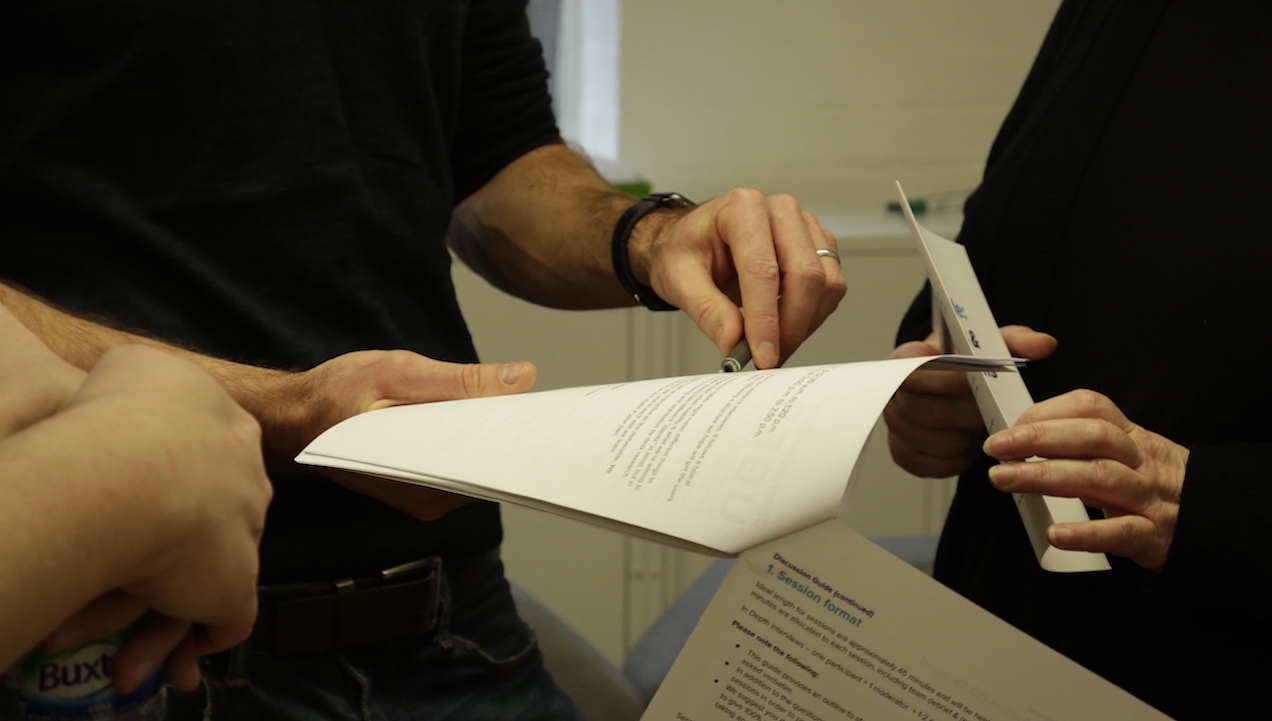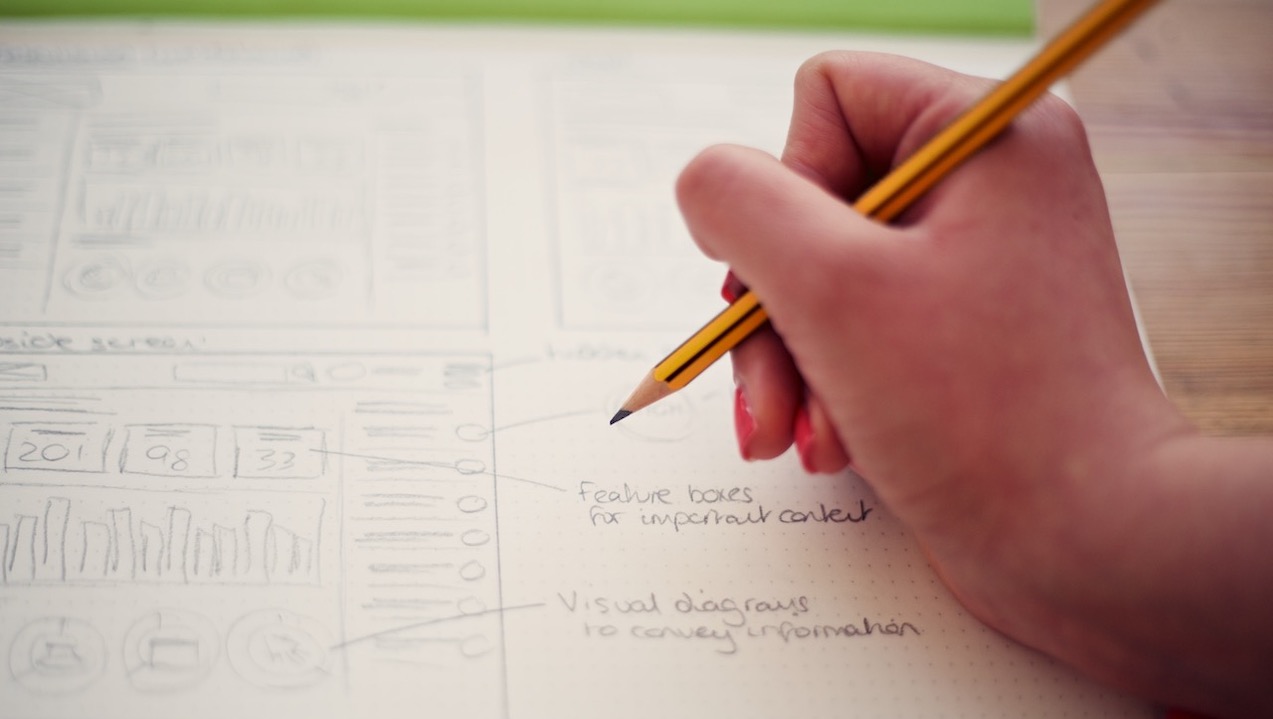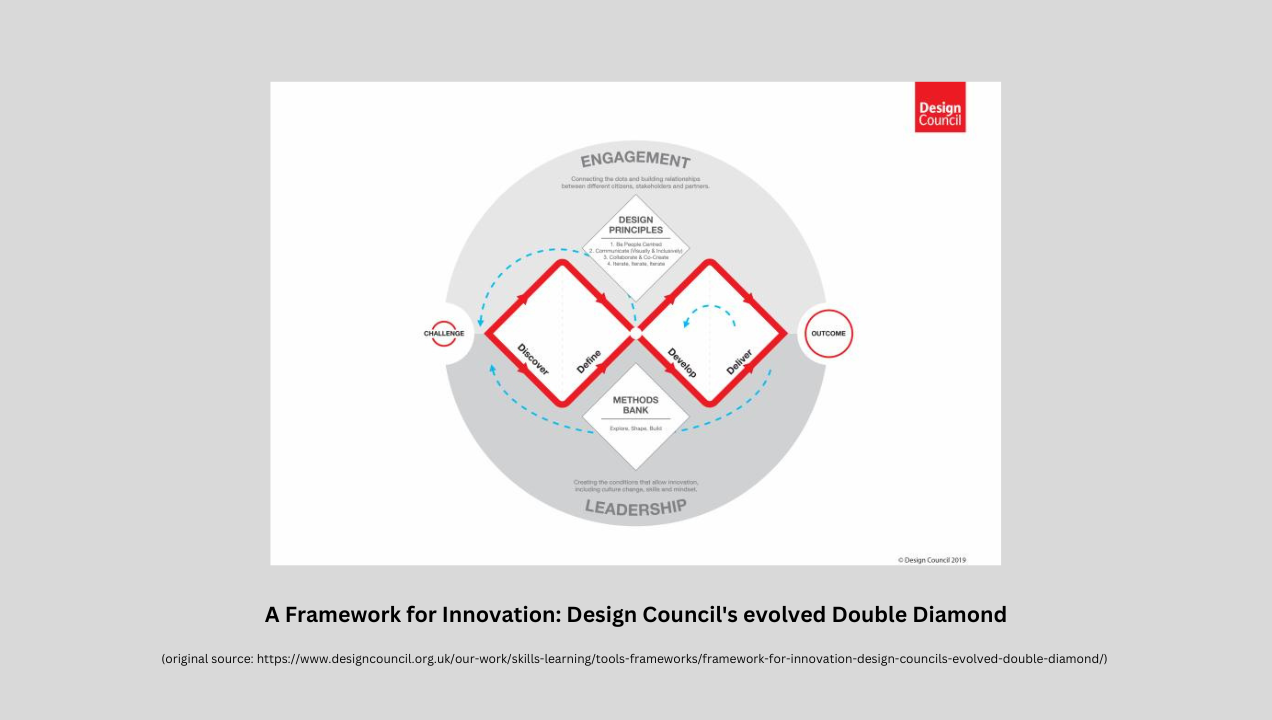Running a Design Workshop for Non-designers
Human-centred design puts real people at the centre of the development process, enabling designers to create products and services that respond to people’s real problems. But how can an organisation inexperienced in design processes incorporate this technique? In this blog article, I describe how I facilitated a design hackathon to help a student union develop human-centred solutions. The approach can be adopted by any organisation to design human-centred products and services.

In today’s competitive business landscape, organisations are constantly looking for ways to stand out and gain a competitive advantage. One key strategy that can help them achieve this is by adopting the human-centred design approach. Human-centred design is a design philosophy that prioritizes the needs and wants of the end user, rather than the desires of the company or designer. By putting the needs of the user at the forefront of the design process, organisations can create products and services that truly meet the needs of their target market, resulting in increased customer satisfaction, loyalty, and ultimately, revenue.
But how can an organisation without any experience in human-centred design adopt this approach? In April 2022 I ran a design workshop in the form of a hackathon for the student union of my undergrad uni to help them out with this. The union offer advice and support to students, organise events, engage in university politics, participate in curriculum development and many more things. However, the members and leaders of the organisation struggled with knowing how to best offer their many services to their users (i.e., students). They noticed that fewer students would use their services and didn’t know how to best come up with new ones students would engage in. This is because they are often designed based on a best-effort basis due to limited resources such as budget, time, skills and (user) knowledge. Additionally, the pandemic also wasn’t helpful for student engagement.
In this article, I describe how I prepared and ran a design hackathon together with my co-facilitator to help the student union improve their services and come up with new human-centred solutions that might solve their users’ problems. I’ll share an overview of the hackathon structure and the design framework we used, as well as some reflections on what worked well and what we might suggest doing differently for anyone planning similar hackathons.
Hackathon Structure
The hackathon lasted two full days and was part of a 4-day-workshop the student union conducts annually. It started with an icebreaker for the participants to get to know each other, followed by an activity in which they could set their expectations for the hackathon.
Then we introduced them to human-centred design and the hackathon. We told them that by the end of the hackathon, they needed to present a solid solution that would provide significant value for their students and solve their problems. They formed teams of 3 and brainstormed problems the current users of their services might encounter. Each team then had to select one problem they would like to work on during the hackathon.
The meaty part of the hackathon revolved around the four design phases of the Design Council’s Double Diamond design process. This is a flexible and widely applied framework for approaching design projects that allows for iterations and changes throughout the stages to design a human-centred solution. It was developed by the UK Design Council and consists of four phases: Discover, Define, Develop, and Deliver. I will explain these phases and the methods we used for them in the next section.
After the last phase of the design process, we explained to the participants how to give good pitches and what we expected from their pitches. Finally, the participants gave their pitches and we chose a winner based on criteria we communicated to them beforehand.
Design Phases
Discover
The first phase of the Double Diamond design process is the Discover phase. During this phase, the focus is on understanding the problem and gaining insights into the needs and wants of the target users. This includes all kinds of explorative user research (also known as generative user research) such as user interviews to get a deep understanding of your user’s identity and why they are doing things the way they are.
In the hackathon, we explained to participants the basics of how to conduct this kind of research by explaining to them a common structure of such interviews and general things to consider when asking interview questions such as
- avoiding leading questions and assumptions
- the difference between open and closed questions
- using simple language
- showing interest in the interview participant’s responses
We also taught them how to ask follow-up questions by using the simple Five Whys method. They applied those methods by crafting rough discussion guides and conducting telephone interviews with fellow students who weren’t part of the student union. The insights allowed some groups to debunk some of their pre-existing assumptions about students’ needs and to understand their real problems, even after asking just a few questions.
For example, some student union members found out that the flexibility of the master’s programme syllabus was quite confusing to some students. They expressed a need for a simpler and more interactive explanation.

Define
Once the problem and user needs have been understood, the next step is to Define the project. This involves synthesizing the research and insights gathered in the Discover phase to create a clear problem statement and design brief. This phase also involves developing a deeper understanding of the users’ needs and wants and defining the project’s goals and objectives.
One way to do this is to converge the research findings into Personas, which is what we suggested at this process stage during the hackathon. This helped participants come up with a design brief to solve a problem of their persona.
To draw on the previous example of the confusing syllabus, the respective group designed a persona that represented their interview participants with similar needs and wishes which they addressed in the next stage.
Develop
The third phase is the Develop phase. Here, the focus is on generating design solutions that address the problem formulated in the Define phase. This includes brainstorming, sketching, prototyping, and other forms of ideation.
In the hackathon, we used the Crazy 8’s method in which participants had to come up with eight ideas in eight minutes. Each idea needed to be accompanied by a sketch as sketches make ideas more tangible and help communicate them. We made the activity more fun – and quite frankly more intense – by blasting the song Free Tibet (Vini Vici Remix) by Hilight Tribe as this was a running gag of the student union. It was quite convenient that the song lasts exactly 8 minutes.
After this activity, they had to pick one idea they would like to develop further by proposing its ideal customer journey map. This helped them to define the ideal user experience at each stage of the solution as well as all necessary activities, touchpoints, and KPIs to enable and test the solution.
Ideas to solve the problem of the confusing syllabus included holding explainer events, writing an explainer blog post, creating an explainer video, or developing a tool that helps one to interactively choose modules for one’s master’s programme. Due to the participants’ technical skills and the potential benefits of the idea, the respective group decided to go ahead with the last idea.

Deliver
Finally, in the Deliver phase, the focus is on creating the final product or service that will be delivered to the user. This includes testing, refining, and finalising the design, as well as preparing the product or service for launch.
As it would be unrealistic to come up with a fully developed product in the hackathon, participants had to deliver a well-thought-out idea that was the result of the human-centred design process and tested with real users. In this regard, we encouraged participants to build prototypes, draw sketches, and/or develop concepts they would validate with real users. For timing reasons, we told them to contact the same users they talked to in the Discover stage and ask for their feedback about the solutions they developed.
As mentioned earlier, participants had to give a pitch after the last design stage. We made the pitches more exciting and fun by creating a whole experience out of them: we played tech-conference-sounding dubstep before and in between pitches, dimmed the lights, arranged the participants’ chairs to form an audience, and built a stage made out of tables the hackathon participants had to stand on for their pitches. Those pitches had to last no longer than 3 minutes strictly and participants had to present their solutions and explain why they solved the students’ problems. From our judges table (separated from the audience and at the other end of the room of course), we judged the participants’ pitched solutions based on problem-solution fit, novelty, design process, and pitch performance. The winning team received a soft ice cream machine as a prize! 🍦 After the hackathon, the student union discussed and decided the next steps that were necessary to implement the pitched solutions.
Reflection
The hackathon worked really well and all teams could come up with innovative solutions that directly address the problems of the organisation’s users. Examples included the already mentioned interactive course module picker, a team reorganisation for the student union to be more service-centred, or a new snacks service for students. The participants reported that although following the whole design process and conducting all methods in only two days was very intense, they had a lot of fun doing it. They truly enjoyed learning about design and coming up with human-centred solutions. The hackathon also motivated them to follow up on the ideas after the event.
Reflecting on our facilitation of the hackathon, I do think that at times it was quite theory- and methods-heavy. Therefore, I might consider cutting down on the number of methods in a future hackathon. I also might reconsider facilitating fairly complex frameworks such as the user journey map to give the whole hackathon more breathing room. This could allow for more time to focus on solution development and prototyping.
Overall, I am glad to say that the hackathon was very successful. This way of facilitating and utilising design methods can be adapted to come up with human-centred solutions for any organisation. A (design) company could also host such a hackathon as a recruiting event for design students or for employer branding purposes. If you are interested in hosting a design hackathon/workshop with us or benefiting from any other of our design services, feel free to reach out at info@sutherlandlabs.com!
Image credits: Sutherland Labs and iStockphoto.

